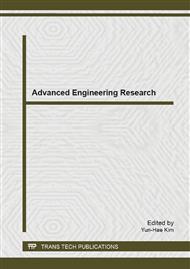p.349
p.356
p.362
p.366
p.372
p.377
p.381
p.385
p.390
Experimental Study on a Piezoelectric Energy Generator with Support Device Excited by Rotating Magnets
Abstract:
Introduce a piezoelectric energy generator (PEG) with support device excited by the magnetic coupling force between rotating magnets fixed on a rotator and nickel plate fixed on a piezo-beam. The influence of magnetic force (number of the magnets), rotating speed and the work condition of the piezo-beam (with support device or free condition) on energy generation of the PEG was investigated experimentally. The research results show that there are several optimal rotating speeds for the PEG to achieve peak voltage at speed range of 0 to 1200r/min. Under the distance of rotating magnets and the piezo-beam is given, the peak voltages rise with the increasing of rotating magnets number and rotating speed.The maximum peek voltages from the PEG with 2/3/4 rotating magnets fixed on the rotator are 14.4/18.6/20.2V respectively and optimal rotating speeds are 660/456/348r/min. The support device makes optimal rotating speeds move backward, exerts great influence on the rising phases of the peak voltages, prevents piezo-beam from deforming excessively and improve the reliability of PEG.
Info:
Periodical:
Pages:
372-376
Citation:
Online since:
April 2014
Authors:
Keywords:
Price:
Сopyright:
© 2014 Trans Tech Publications Ltd. All Rights Reserved
Share:
Citation:


